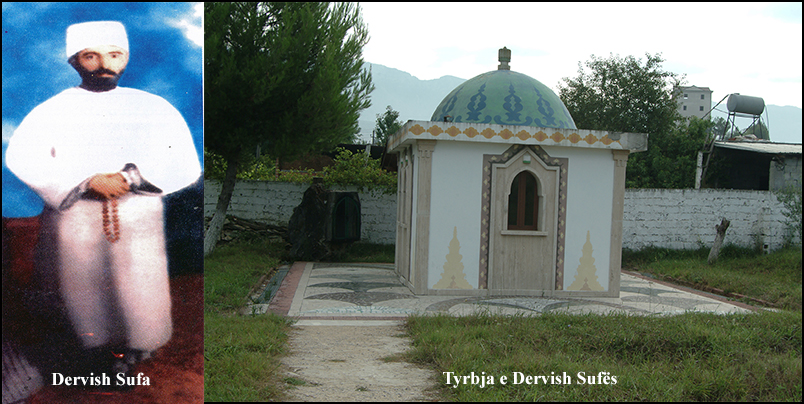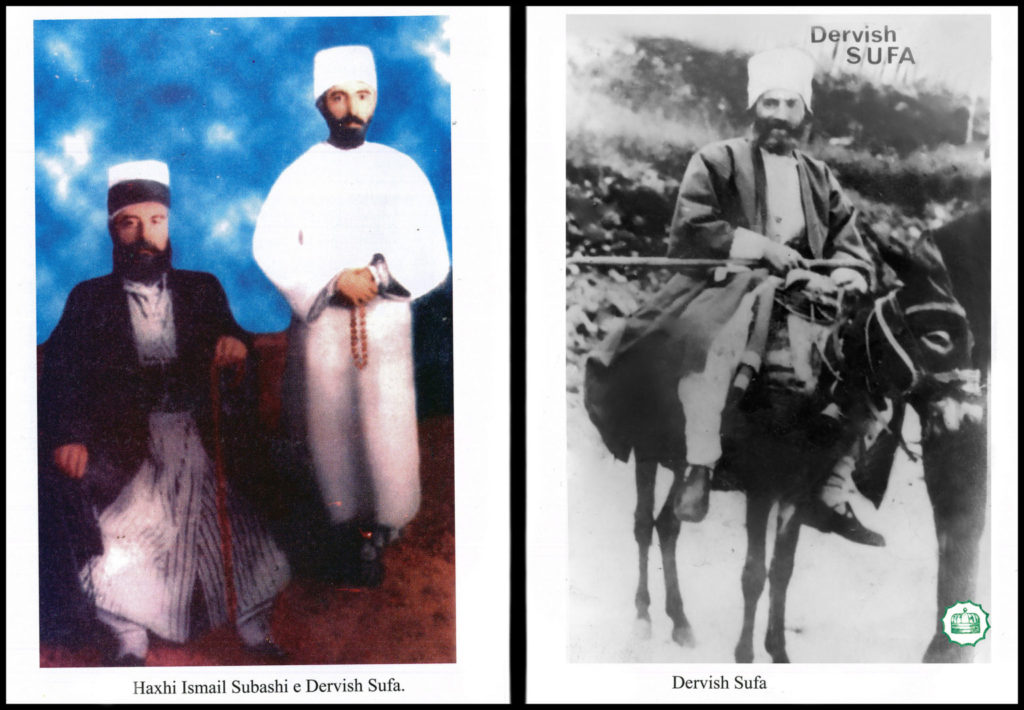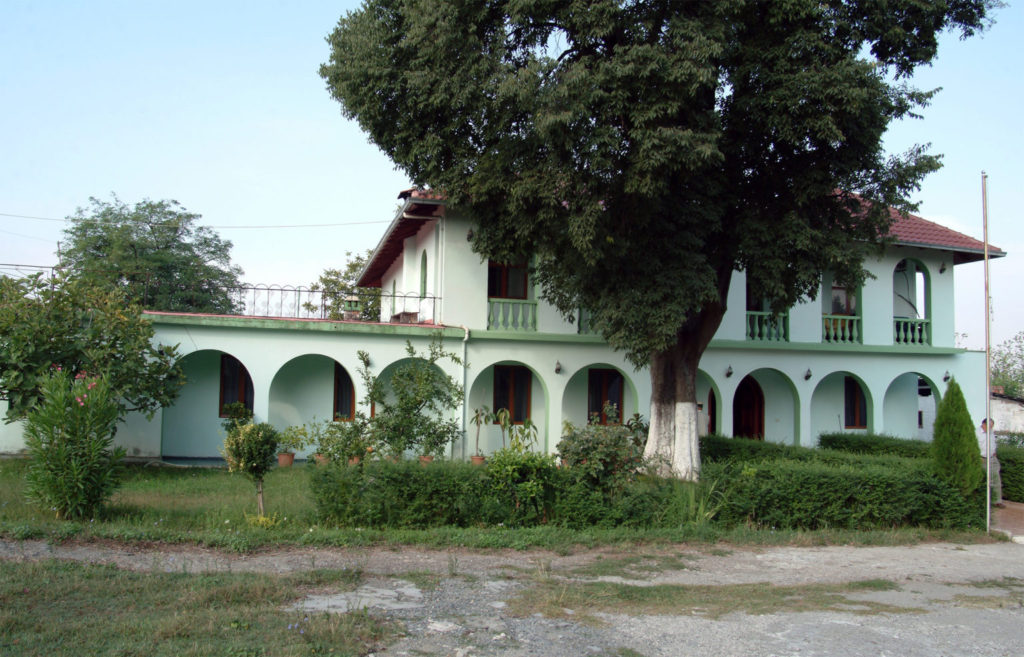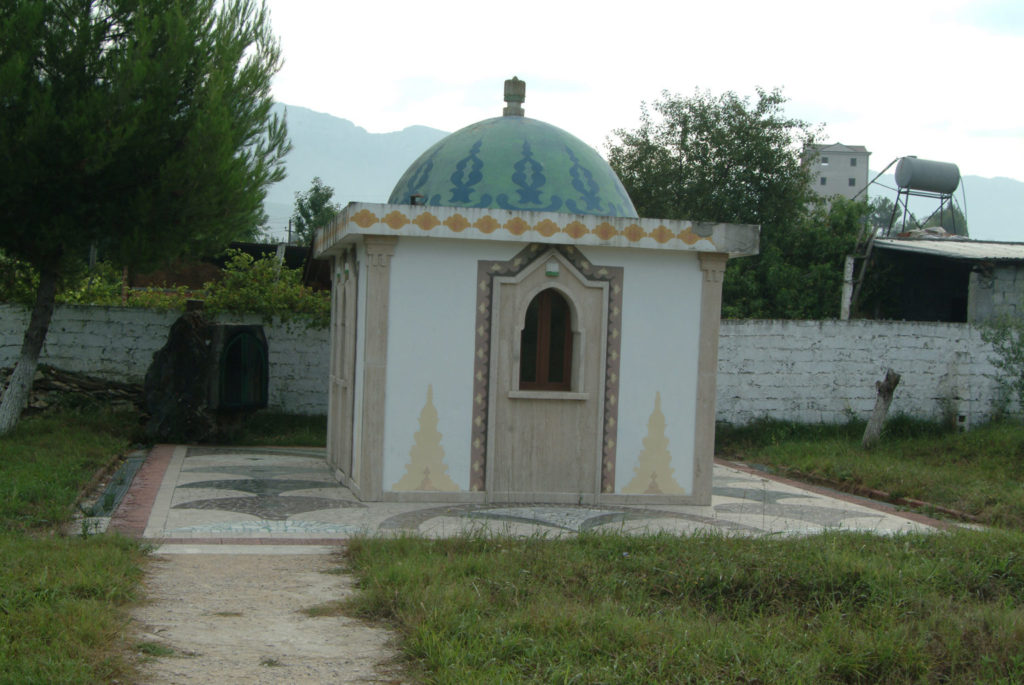
Today is the 88th anniversary of the passing of this life, of Dervish Sufa, the well-known cleric from Kruja. He comes from a well-known Kërçinë family in Dibër e Madhe, but for a long time (first quarter of the 18th century), he had settled in Krujë. According to the documents of the time and evidence, the Kërçini tribe inherited in generations the pure Bektashi faith. Kërçini was a large tribe from which well-known Bektashi clerics such as Hajdar Kërçini (Hatemia), Father Sulejmani, the dervish of Suleimani, etc. After passing away, the clergy of this tribe were buried in the large shrine and the small shrine of the Gjormi tekke in Kruja. The well-known Kërçini family is related to the Hatemi tribe of Gjorm in Mamuras, Avlla Kërçini had two sons, Islam and Mustafa (born in 1836). Mustafa married Gonxhen and they had two sons, Fazlli and Isuf (the next dervish), in 1873.
Mustafa and Gonxhia were believers and myhibs. Mustafa, after the birth of Isuf, dressed as a dervish and served in the tekke of ‘Shememi Babai’, in the years 1879-1880. After passing away, he was buried near the tekke ‘Shememi Baba’. The trunk of this family is also related to three gender tribes, Kërçini, Zhuku and Baltori. Isuf’s parents took special care of him, while the other eldest son, Fazlli, was a supporter of the 1906 Tallajba war. He was killed by the Turks in Mamuras in 1907. They also had a daughter, Khadija, who got married in Durrës, to the Qehajt tribe. Isuf’s life was full of parental care and love, thanks to the Bektashi culture he received from his parents and tribe. Visits to the tekke of ‘Shememi Babai’, Ball Efedi and the climb to the mountain of Kruja, Sarisalltik during the days of pilgrimage, left traces in its formation since childhood. In 1881, at the age of 8, he started the Turkish primary school with mullah Hysen Topçi the First. They went at the ‘Varosh Mosque’, where he taught Turkish, Arabic, mathematics and religious education. He taught the Qur’an by weaving and was a distinguished student. Thanks to his intellect and work, he finished school for 3 years, in 1884. The 11-year-old boy knew many Qur’anic verses by heart. Often his father, Mustafa, took him to the ‘Tekke of Shememi Babai’ where he participated with his family in festivals and ceremonies such as Sultan Nevruz, Matemi, Ashura, Eid al-Adha and Little, gradually becoming acquainted with the saints of Bektashism for Sarisaltik, Shememi Father, Hatem, father Hysen Kukeli, father Haxhi Ismail Subashi etc. His father, dervish Mustafai, passed away at the age of 52, leaving Isufi an orphan at the age of 15. But Isufi walked in the path of his father, not only as a believer knowing more about the history of Bektashism. The father of the ‘Shememi Babai’ tekke, Haxhi Ismail Subashi, etc., saw in him not only family education, school, but also special qualities to become a future clergyman. Hajji Ismail Subashi never separated himself from himself, in sweet conversations, increasing his commitment to Bektashism. Thus, worship came to be added to continue the path of Haqq becoming myhib. Next passed the rehearsals of preparation as dervishes, of 1001 nights, a Bektashi code that lasts about three years. Dervish Sufa, recognized in father Haxhiu the great love for God, the Creator of the Universe and his high spiritual rank. He visited the holy places in Kruja and other places, where he got a general Bektashi culture. In 1891, when he turned eighteen, he became a dervish by the myrshid, Haji Ismail Subashi. He learned a lot from father Haxhiu, not only religious culture but also education for the feeling of patriotism. Historical sources show that father Haxhi Ismail Subashi, together with dervishes Sufa, for their anti-Ottoman stance, for two years, was interned in Nadan, Turkey. After the internment, they returned to Kruja, continuing the direction of the tekke. Thus, father Haxhi Ismaili never divided the dervishes into religious services and the administration of the tekke. But their patriotic spirit was clearly reflected in 1911, when the war took place in Shkodra with Montenegro. By order of Father Haxhiu, the volunteer fighters of Kruja were fed from the tekke of ‘Shememi Babai’, the food which was cooked by dervish Sufa. It is interesting, and the fact of their confrontation with Haxhi Qamili, who burned the tekkes of Dervish Shabani, Zemzen Babai, Ballë Efendi and the tekke of Shehu, in Kala. In this difficult situation, father Haxhiu together with dervish Sufa, opposed Haxhi Qamil with a battalion of volunteers from Kruja, stopping the other burning of tekkes in Kruja. The resistance of these clerics was also reflected against the Serbian occupation.
After these events, in 1917, when father Selim Qyshka I passed away, father Haxhiu transferred to Hambaraj of Fier. Father Haxhiu passed away in Hambaraj in 1920. Dervish Sufa, during this period also served in other tekkes of Kruja, such as Haxhi Jahja Baba, at the Byjyk Abdall shrine and often visited the Kruja and Dibra areas. He often went to Martanesh and Haxhi Bektash in Turkey. He became very famous in Kruja, but also in its surroundings. Dervish Sufa, not only knew how to run the tekke, but was also a good administrator, distinguished for his rare mystical qualities, he has done many miracles, as the Kruja believers still tell him. This calender became famous for having an enlightened mind. He knew the Qur’an very well, he knew Arabic, etc. He was respected by all official personalities, Abaz Kupi and King Zog himself knew him closely. They often allowed him to come to their offices, even riding on a donkey. He is also known for many miracles he has performed. He passed away on April 14, 1933. At this time the tekke was led by Father Mehmeti, who was buried where the tomb is today. Believers lit the candle every night. … The tomb was built in 1953. But in the year 1967, it was demolished. His tomb was rebuilt in 1994 by the well-known charity Hysen Goci and was later repaired by Ali Ramazan Veseli, a resident of Mamuras.
For dervish Sufa, songs were sung, which were transmitted to generations. In one after them, (after finding the bones), among other things it is said:
Dervish Sufa we are thankful, /
With all heart, not with words, /
Jesuits tormented you, /
They flattened your market, /
I searched a lot to find it, /
Isharet and himself, /
11 / 5000
you destroyed cement like harasan/
He told us: “Here I am!”
The believers of Kruja write this epitaph in his grave:
“Dervish Sufa, let’s be thankful.”
Qeramete many showed /
Old man or young/
You honored all the believers of Kruja. “
..Dervish Sufa was decorated (posthumously) by the President of the Republic in 1995 with the “Medal of Patriotic Activity”, with the motivation: “Prominent religious and nationalist in the fight against the occupiers for a free and united Albania”.
Prepared by:
Nuri ÇUNI
Kujtim BORIÇI




